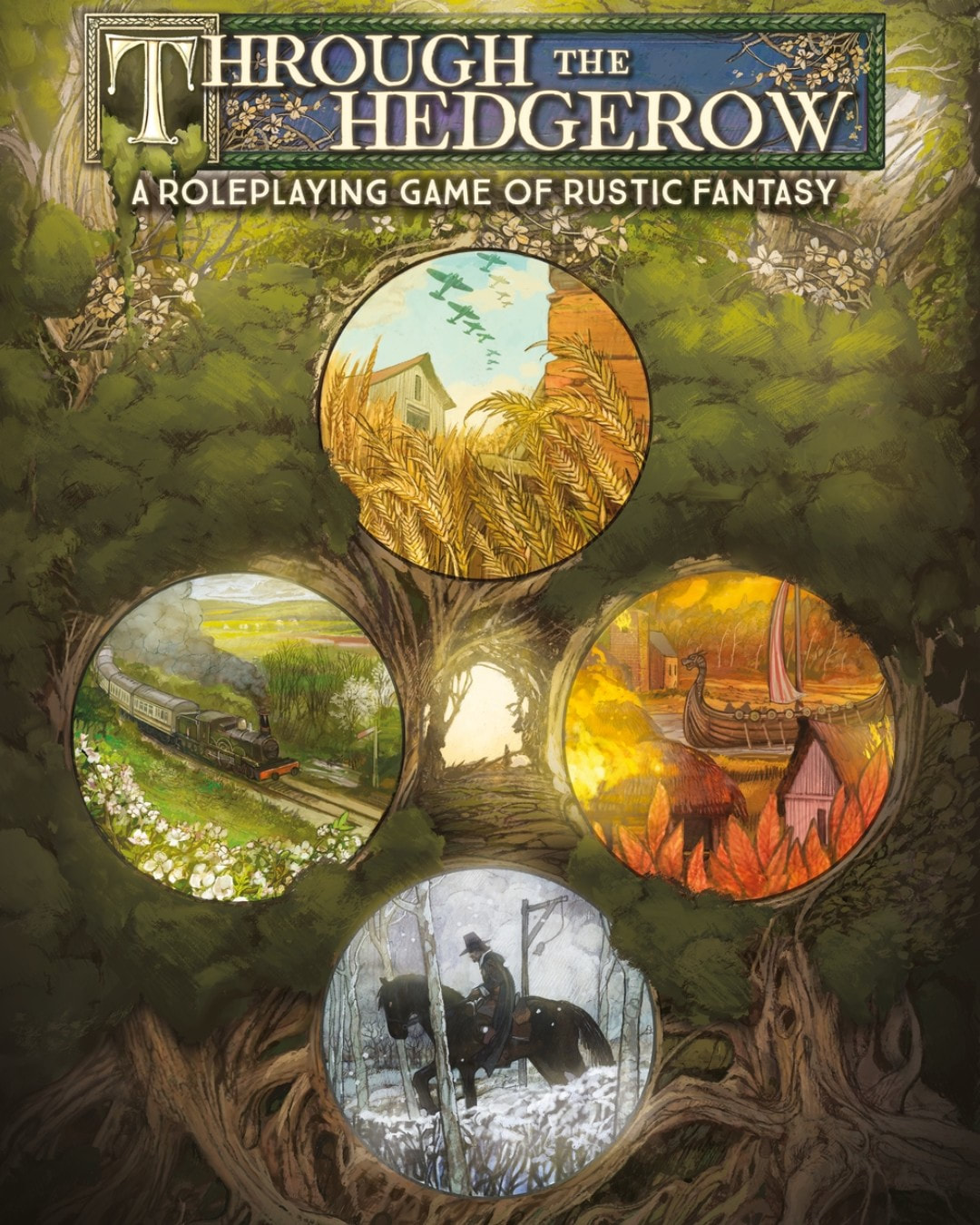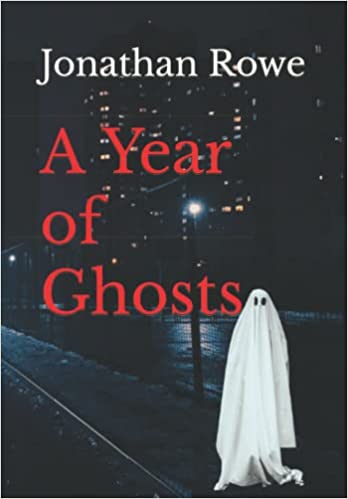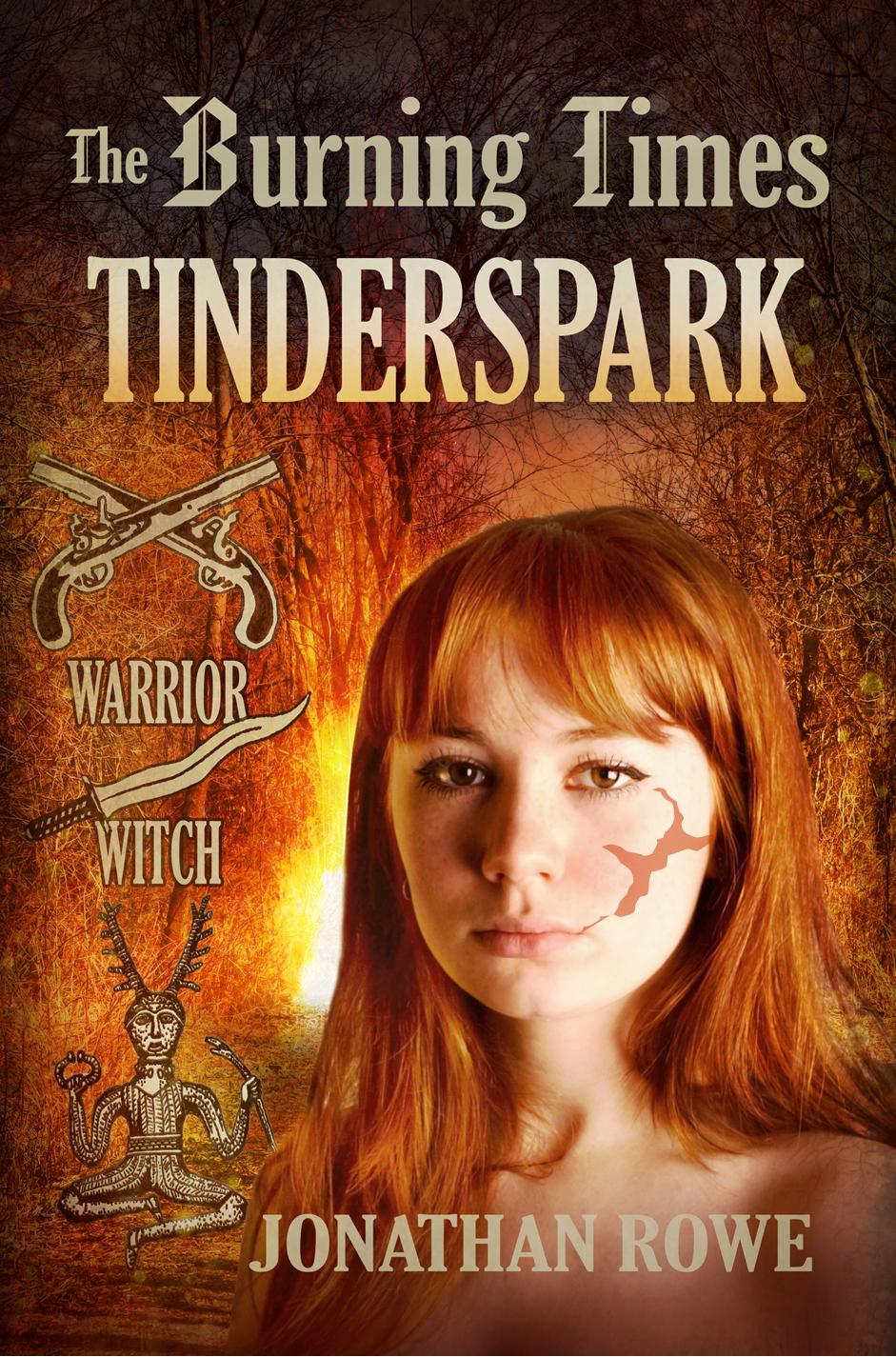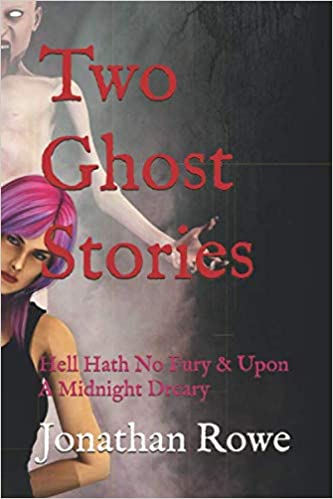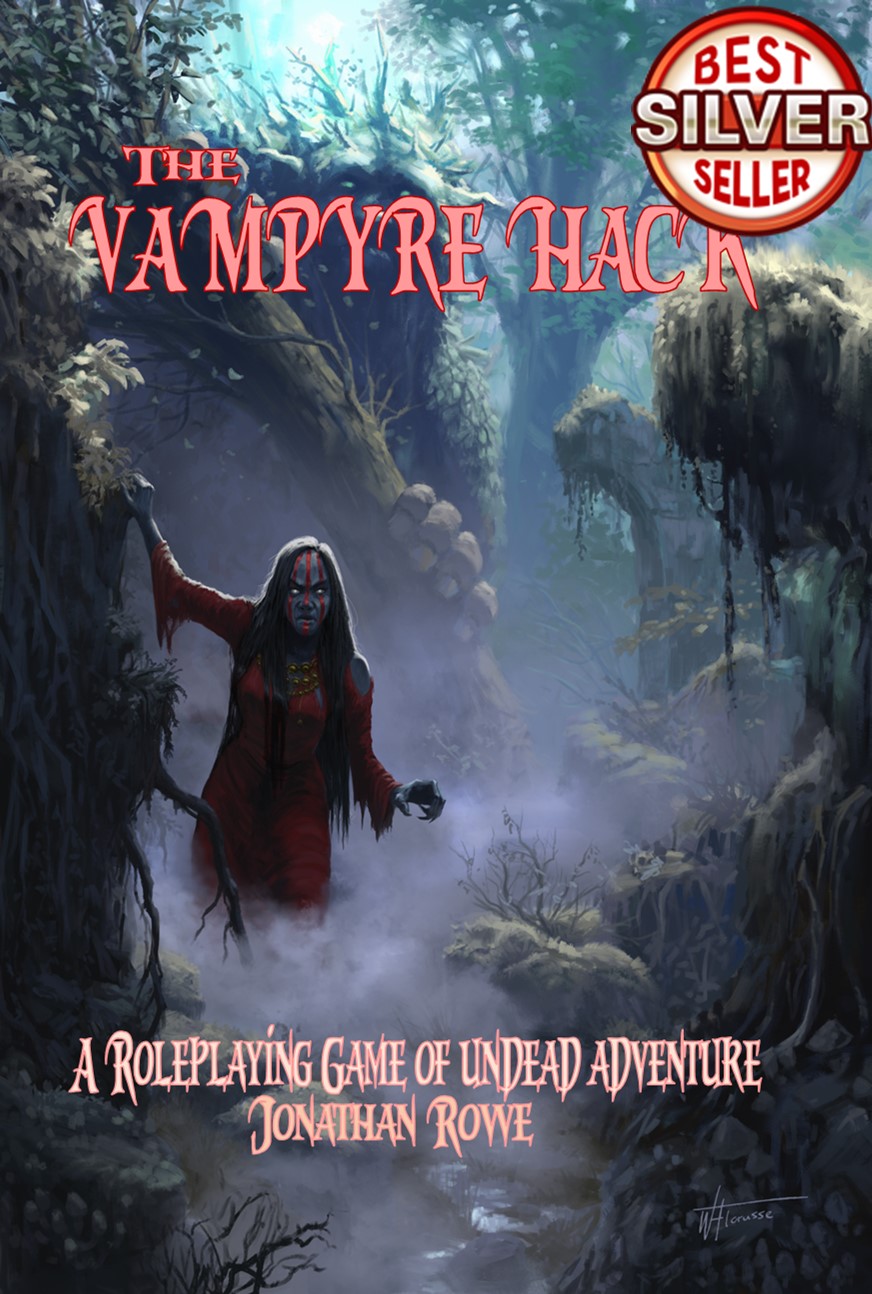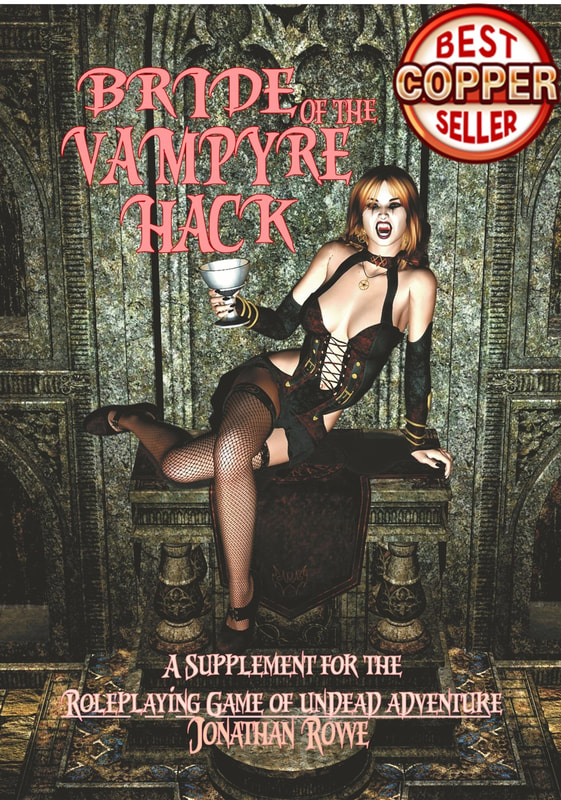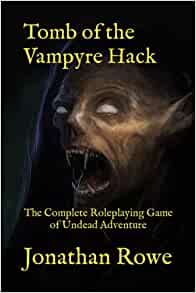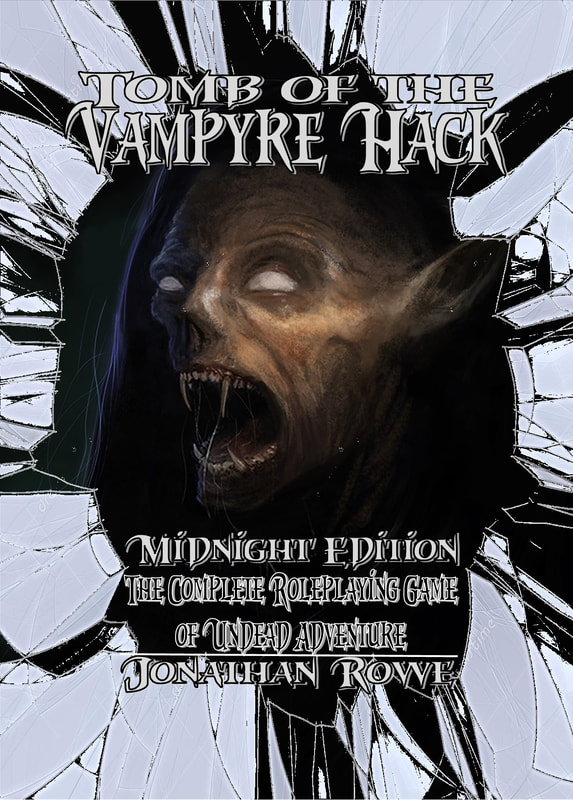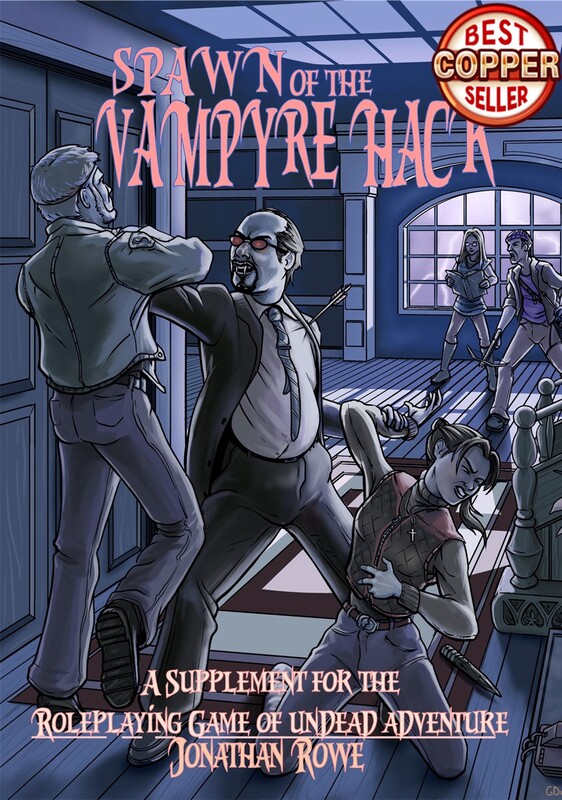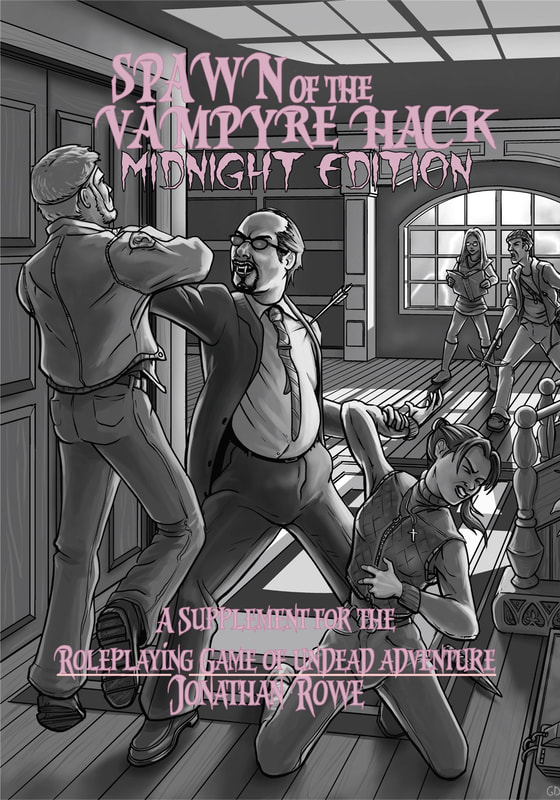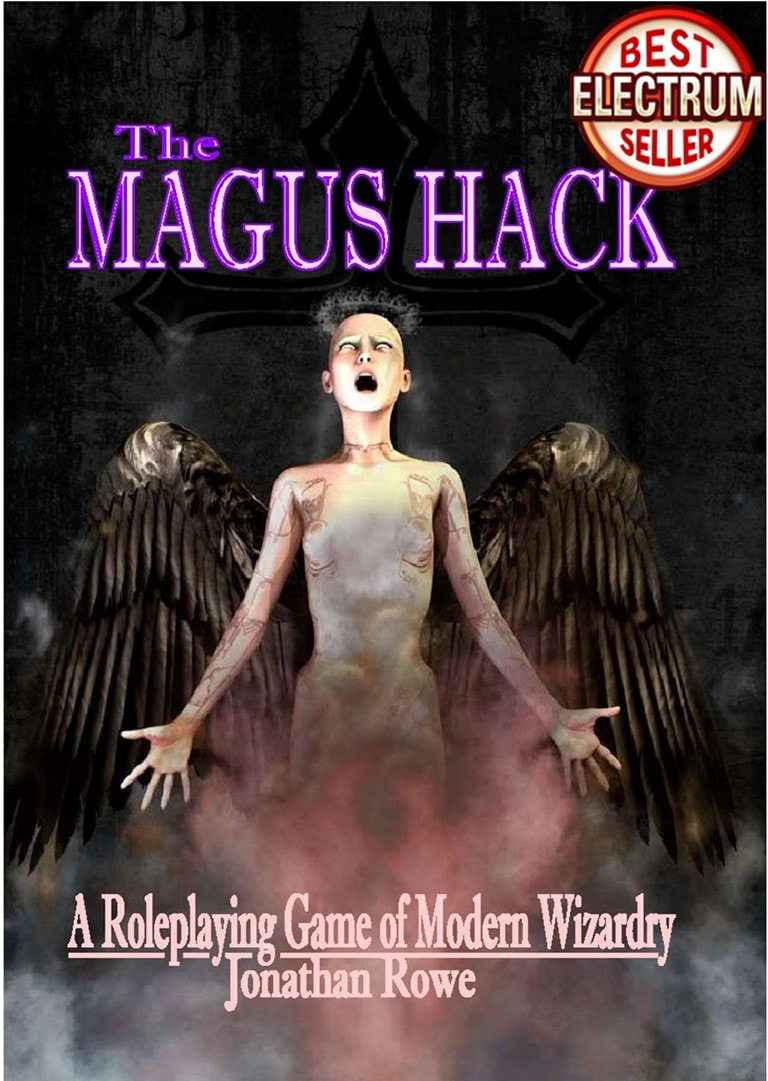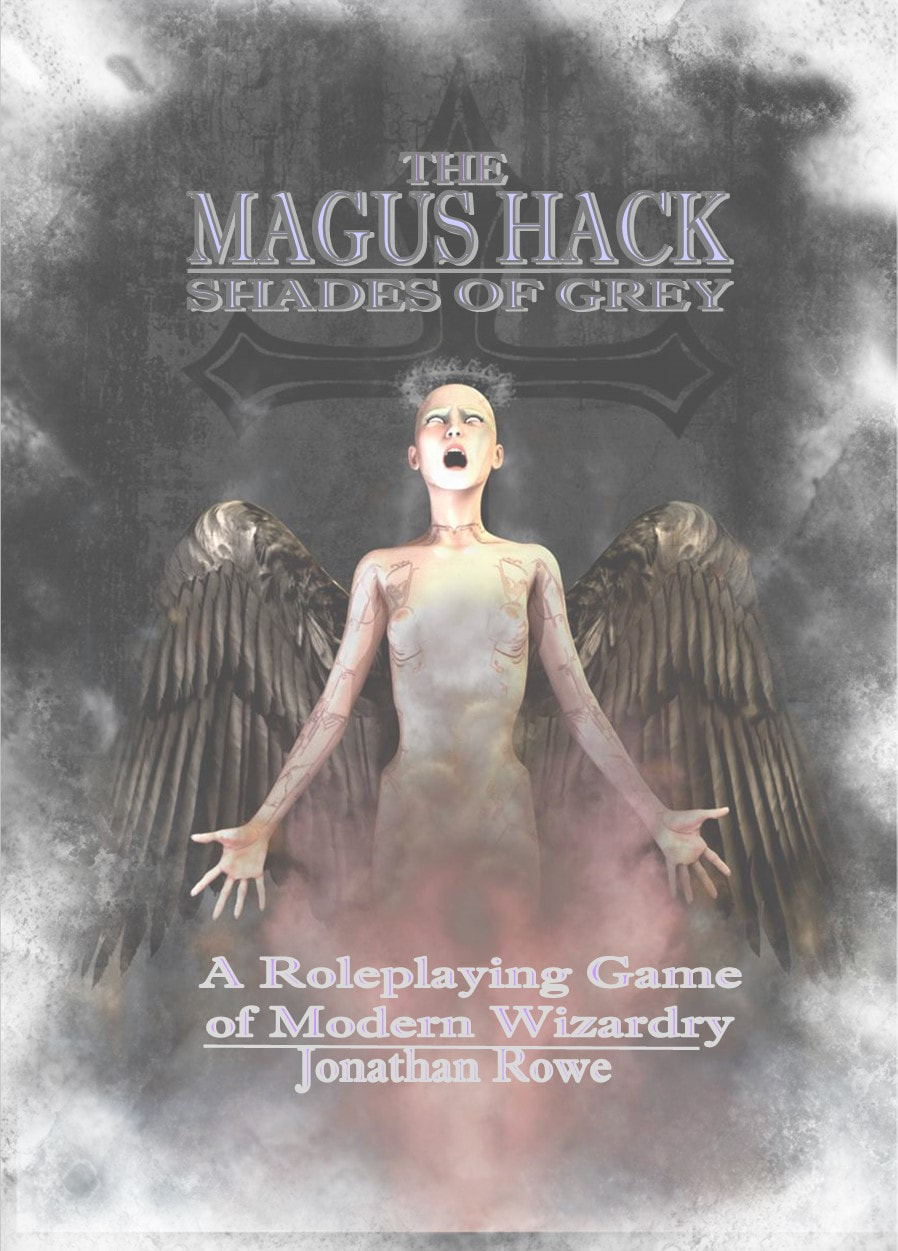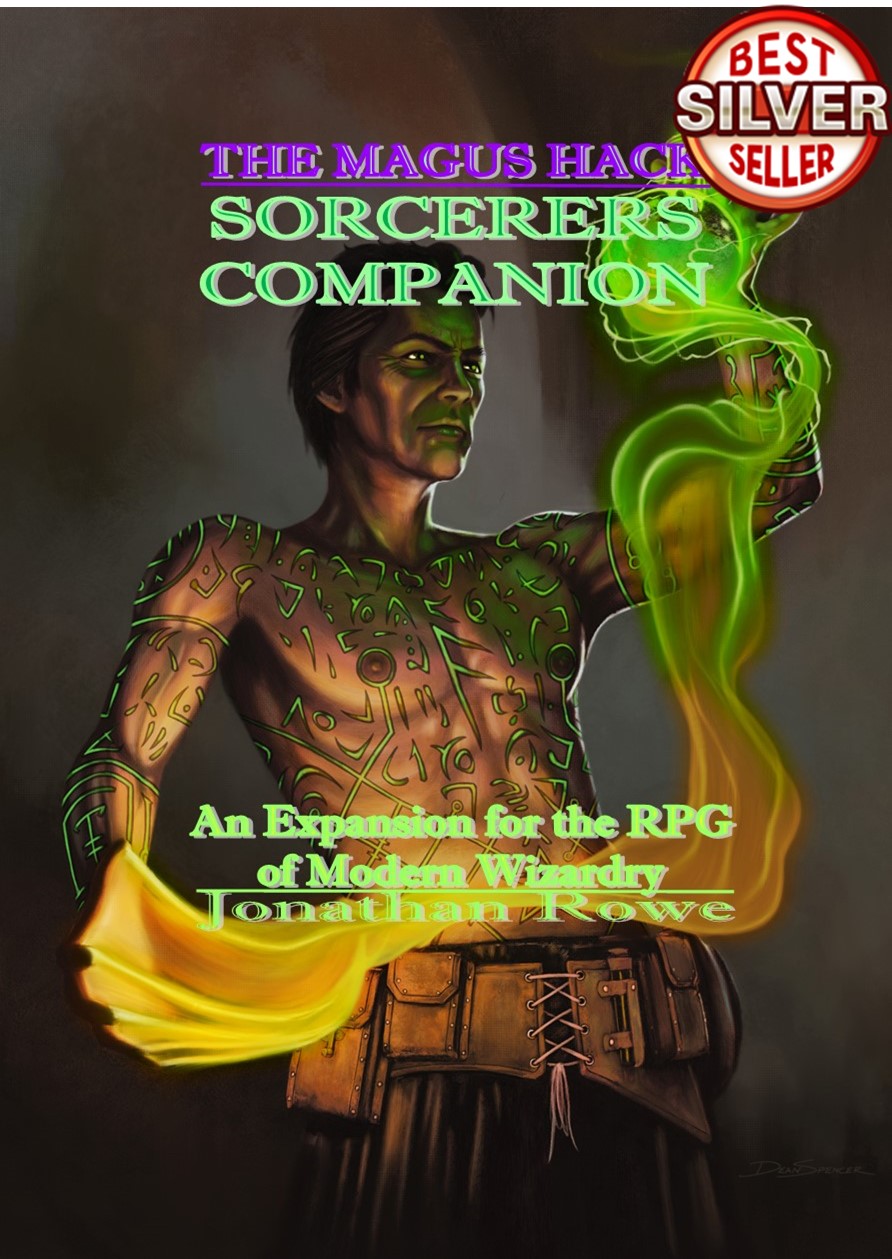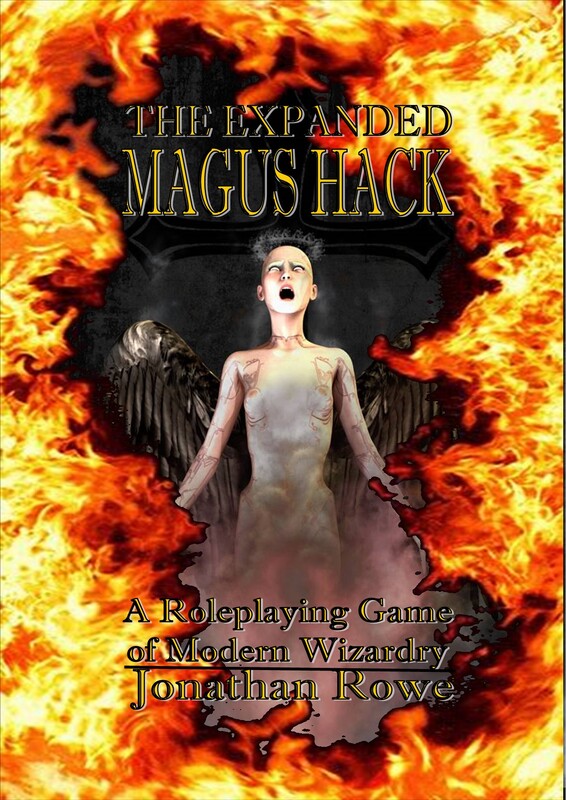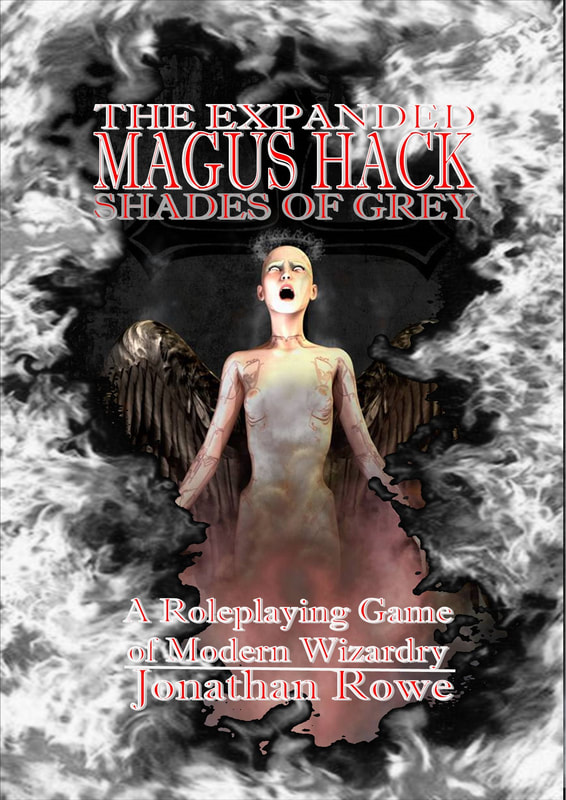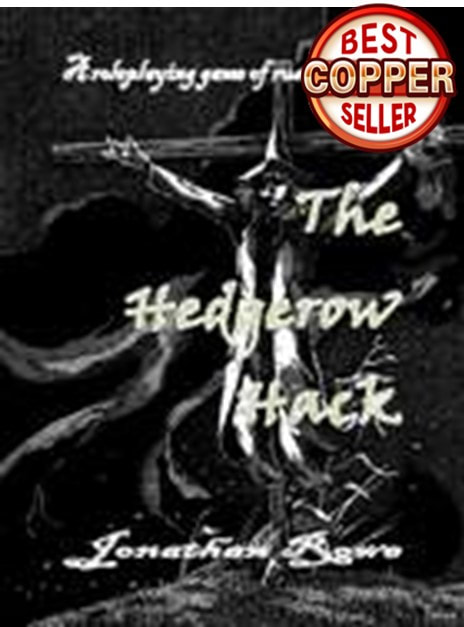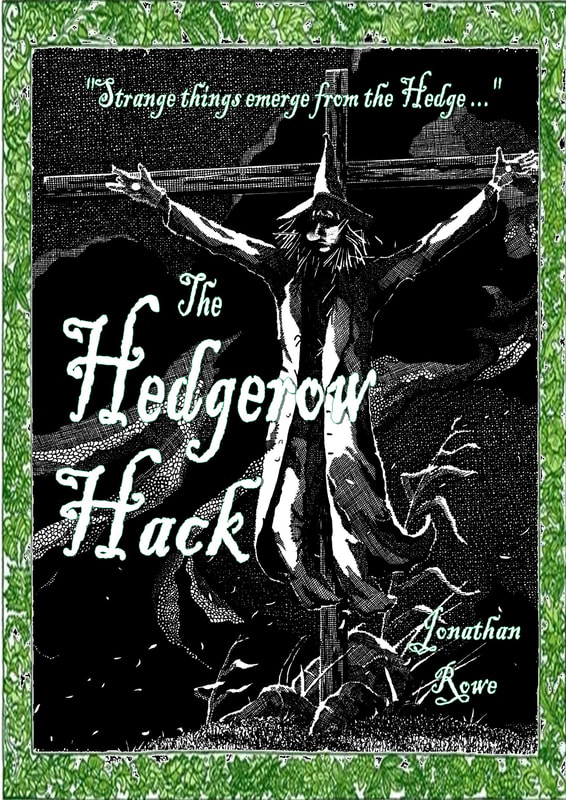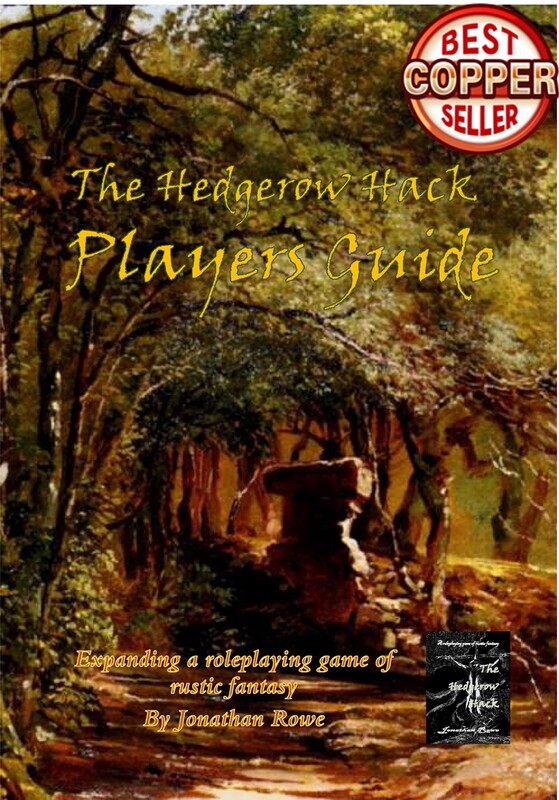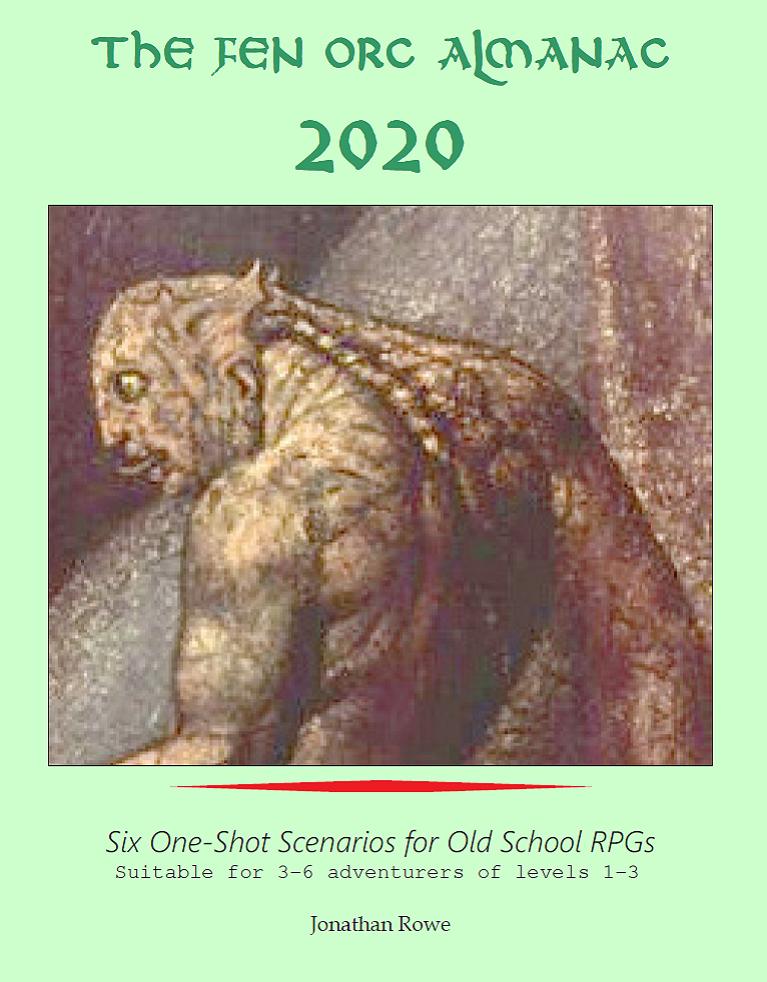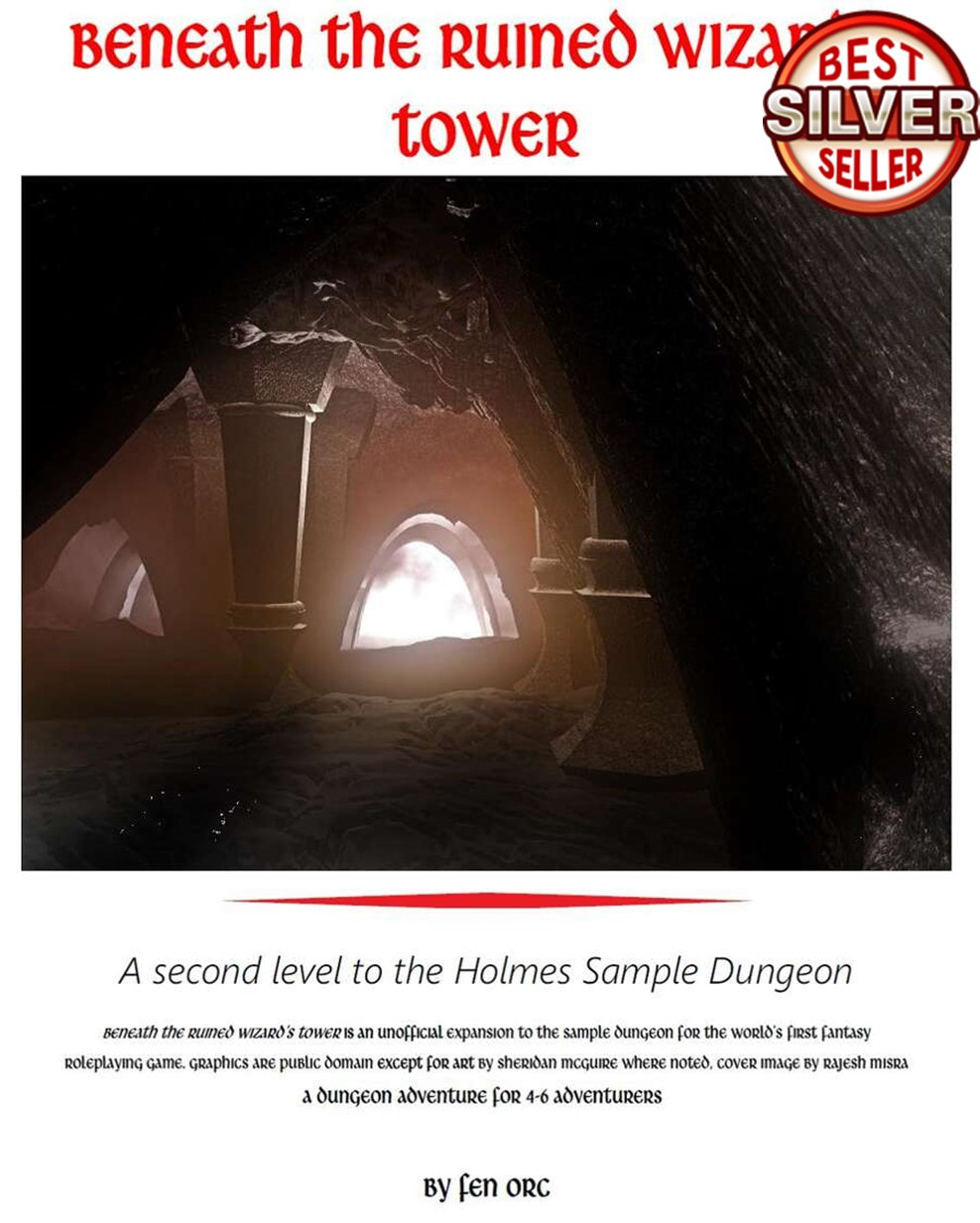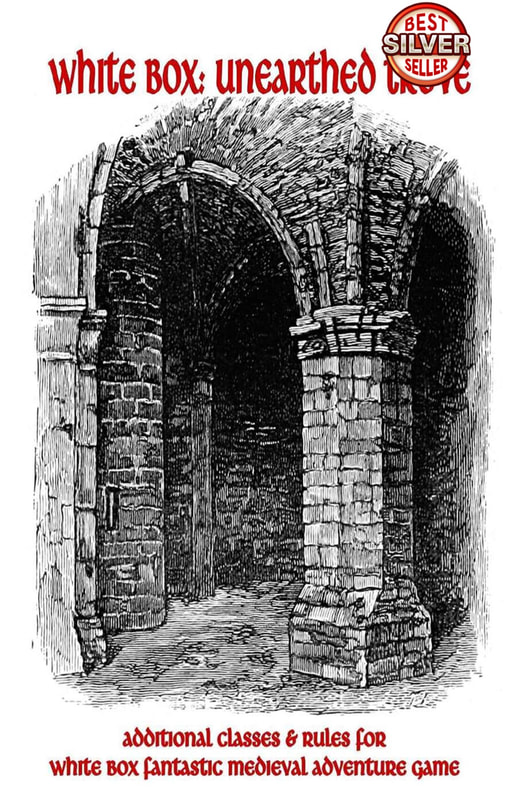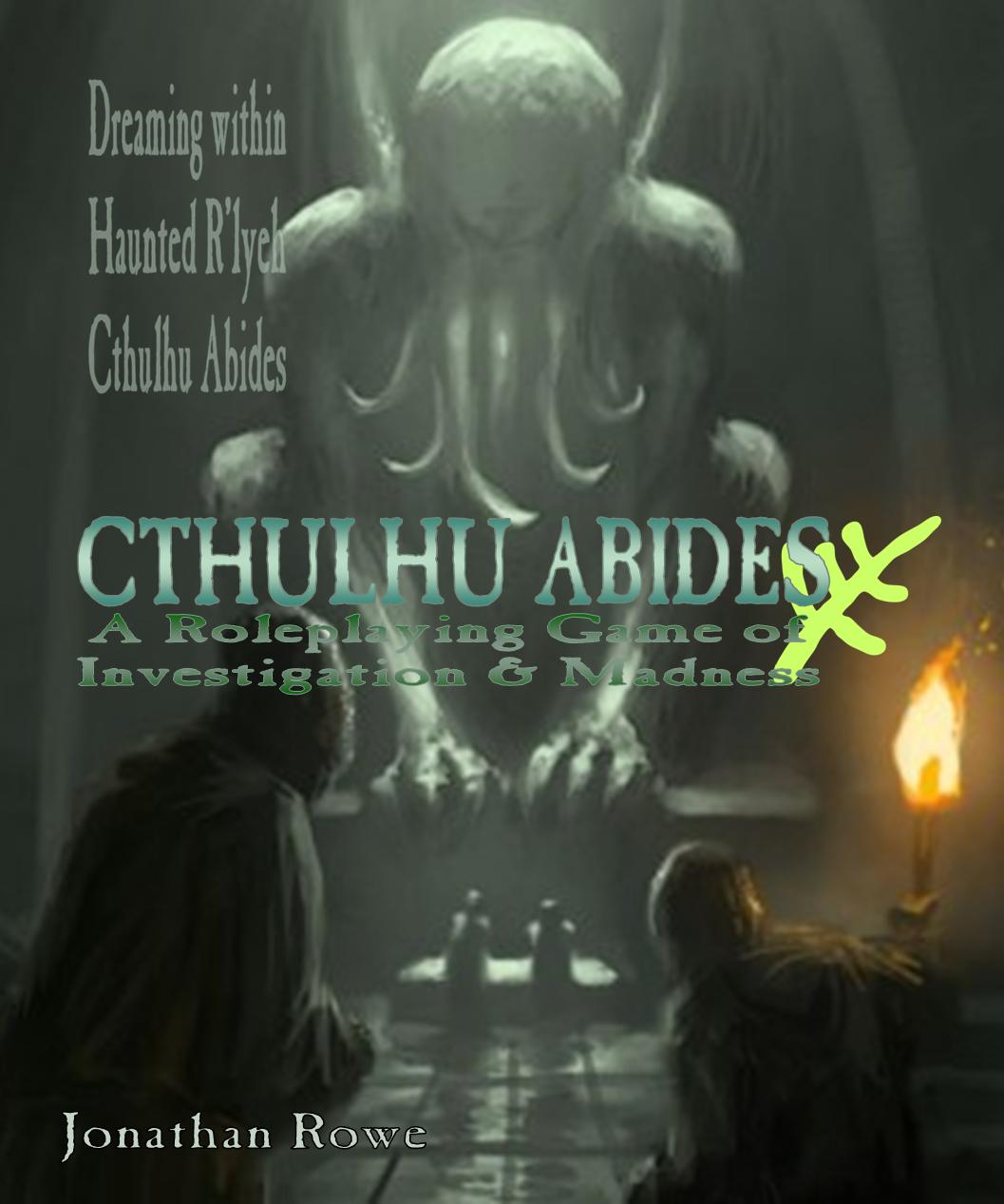|
Behind the facade of normalcy, two forces contend. The farmer ploughs his field, sows the fertile seed. orders his land with neat hedgerows, tends fruit in the orchards, and blesses his family as they sit together at supper. This is the world of the Light. But at night, the Dark arises. The wolf scratches at the locked gates. The earth yawns open and disgorges the bones of the hungry dead that roam the lanes and lurk by stiles, waiting for the unwary shepherd hasting home, too late, far too late, as the sun slips from the hilltops and the night stifles his scream. Through The Hedgerow borrows this trope from classic fantasy - but notably from Susan Cooper's The Dark Is Rising series (and perhaps F. Paul Wilson's Adversary Cycle is rattling around in there too). With my professor hat on, I can tell you that it's a mythological concept rooted in ancient Zoroastrianism and termed 'dualism' by scholars. It's the idea that the world around us is an arena in which two cosmic forces contend: the Light and the Dark. Quite simply, the best Young Adult fantasy series, published in the 1970s and investing the British countryside with apocalyptic significance. It's been a huge influence on me. The Light is the force the nurtures: it is creativity, discovery, lawful and ordered living, perhaps life itself. The Dark is its opposite: destruction, ignorance, chaos, death. In Through The Hedgerow, the player characters have been plucked from their ordinary lives - or, in the case of Fay characters, their already-extraordinary lives - to serve the Light. They might not have chosen this service. They might resent it. It will certainly cost them dearly: at the very least, it will cost them their innocence. The Light & your DoomServing the Light means labouring under a Doom, which is a tragic (or at least bittersweet) fated end. You learn your Doom when you create your character. Perhaps you are fated to betray your companions, turn to the Dark, die defending someone you love, or settle down and lose all memory of the Light and the Dark and your erstwhile comrades. Each character has a Doom Die which starts small (d4) but gets bigger as your Doom draws nearer. That's not a bad thing though - you can roll your Doom Die for any Check or Challenge, so the bigger it gets, the more powerful your character is. Advancing the size of your Doom Die is like 'levelling up' in convention RPGs, except for the fact that you can retreat the size of your Doom Die later, which is 'levelling down.' Why would you want to do that? Well, read on. Your ultimate Doom also determines your Doom Trigger: a set of circumstances that reveals your heroic qualities, but also your destructive flaw. If it is your Doom to betray your cause, then your Doom Trigger occurs when you get up to something important behind your comrades' backs or against their wishes. A Doom Trigger only happens once per adventure, if it happens at all, but it causes your Doom Die to advance in size, so that d4 becomes a d6. It also makes your Doom Die 'unlimited' which means you can use it over and over and really rely on it. In The Lord of the Rings, the Elves have a Doom to depart Middle Earth and travel to the Undying Lands. For many, this is triggered by their first sight of the sea. Legolas experiences the 'sea-longing' when he arrives at Pelargir to battle the corsairs and hears the gulls. Art by Lorraine Brevig Relying on your Doom Die is a risky course of action. If you roll the highest possible number on your Doom Die, that also makes it advance in size. This also can occur once per adventure. This means even a starting character could trigger their Doom then roll the highest number when using their Doom Die and end up with a d8 Doom Die, which is quite a powerful asset. The Doom Die can also increase when you gain rewards at the end of an adventure. In fact, there's one reward that forces you to advance your Doom Die whether you want to or not. The starting character I imagined earlier could end their first adventure with a d10 Doom Die. Isn't that a good thing? Well, yes, insofar as it makes you powerful. Being able to throw a d10 at any particular Check or Challenge is a significant benefit. The problem is, sooner or later your Doom Die will advance past d12 size. When that happens, your character's Doom is at hand: you are about to lose your character. Your Doom Is At HandCharacters in Through The Hedgerow aren't at risk of dying on a routine basis. Even if they are defeated by a Challenge, they are usually just distracted or weakened or possibly captured. It's a rare Challenge that threatens to vanquish them, removing them from the adventure. Even vanquished characters can return in a future adventure: if the Judge allows it, the Light snatches its servants away from peril. There's no getting round your Doom, however. Once that Doom Die peaks, your character's story has come to an end. Through The Hedgerow imagines this Doom to be a collaborative process between the player and the Judge. The Doom should come about in a way that fits the theme of the adventure and respects the arc the character has been travelling. It might be brutal and tragic, or whimsical and bittersweet. Were you stabbed in the back by someone you trusted - or did you fall in love with the Elf Maiden of the Old Moor and decide to stay with her, renouncing your life of adventure? The Doom doesn't have to occur immediately and it might take place in the next adventure you take part in, which would allow the Judge to work your character's departure into the story in a dramatically satisfying way. But go you must! But what IS the Light?It's easy to represent the Light as a force of cosmic goodness and the Dark as diabolic evil. Even handled this way, there's room for a lot of depth in character development. Some Briar Knight characters will be idealistic in their service of the Light, but many are bitter or reluctant. Hodkins are human champions who served the Light in their own age and were gifted - or cursed - with immortality to continue their service across the centuries. They have lost their homes, families, loved ones, everything they knew, to become warriors in an unending war across time. For many of them, their eventual Doom is a blessed release, 'a consummation devoutly to be wished,' as Hamlet says. Buggebers are Fay monsters created to be minions of the Dark. Some have repented and seek atonement by serving the Light, some have offended their former Lords and the Light offers them protection, others are prisoners whose service to the Light is grudging at best. For the bird-faced Ouzels, serving the Light is a political manoeuvre in the Courts of Fayrie: some see themselves as knights and strategists in a grand campaign, but others seek personal reputation or the means to defeat ancient rivals in the struggle between their Houses. Peter Johnston's fantastic art for Through The Hedgerow brings these archetypes to vivid life. Hodkins of the Ages of Plagues and Thunder, a Buggeber of the Age of Swords, Ouzels of the Ages of Swords and Plagues. Dualism gets a lot more interesting as a fantasy trope when the Light and the Dark don't perfectly align with 'Good' and 'Evil.' The Light promotes or perhaps arises from human flourishing - but in a rather abstract way. The Light tends to focus on the achievements of certain 'great souls' throughout history, strives to protect extraordinary treasures or locations of beauty, or tweak the destiny of pivotal figures. It isn't concerned with the 'greater good' and is unconcerned with causing suffering to bystanders as it furthers its plans. Briar Knights might be sent to abduct a child from its parents and entrust it to new guardians so that the child will grow up according to an important destiny - but along the way a family has been divided and parents left bereft. Stories in Through The Hedgerow will often feature these dilemmas and part of the fun of roleplaying Briar Knights comes from exploring their reactions - from both mortal and immortal perspectives -to making these fraught decisions. Eventually characters will exhaust their idealism (if they started with any) and this is where the Doom comes in: there isn't only a game mechanism bringing your character's career to a close because Briar Knights end up seeking their Doom. Eventually, Briar Knights end up rebelling, or walking away, or finding their own corner of a friendly field to die in. The late great John Romita created this iconic cover in 1967. When I saw this as a child, it burned itself into my imagination: a symbol of the renunciation of power and the defeat of youthful idealism. What about the Dark?If the Light isn't entirely 'good' then what about the 'Dark'? Is it evil? In many ways, yes. The Dark employs monsters and undead that hate humanity or else regard mortals as chattel or dinner. But it's worth distinguishing between ends and means. Among the agents of the Dark are more philosophical villains, such as the inquisitors of the Witch Harrow and the emissaries of the Raven Margrave. These adversaries claim to have seen a vision of the future so dreadful that any means are justified in averting it, including retarding human progress, extinguishing inspirational leaders and art, and unleashing plagues and disasters. Even an immiserated humanity is preferable to what the future holds in store. Viewed this way, the Dark offers a home to servants of the Light who have lost faith. The core rules don't explore this in depth: the Dark is simply 'the Enemy' and its progress is tracked by an abstract Nemesis Die. The focus is on Briar Knights serving the Light, their encroaching Dooms, and the travails of their tortured consciences. I'm designing further expansions that correct this: the Coven of Curdled Cream is an organisation of servants of the Dark, antiheroes working in opposition to the heroic Briar Company of Sky and Furrow. And the Deep? And the Spire? And the High Magic too?The Light and the Dark are not the only forces at work in this cosmology. I'm designing expansions that explore the others. The Deep is the spiritual power of the primordial waters - and death, which lies within and beyond them. From the Deep come ghosts, revenants, and doppelgangers, as well as alien races that occupy the border between life and death. The Deep needs policing and the Light and the Dark collaborate on this: the Pardon of the Grey Haar is a team brought together by their respective masters to tackle incursions of the Deep. Along the Salt Strand is a planned expansion that moves the action of Through The Hedgerow to the coasts, islands, and rivers, to storm-lashed cliffs, fishing villages, and drifting ghost hulks. The Spire is the spiritual power of human progress - and the force of religion. From the Spire come Fiends who draw humans to them in devotion and set them to labour in factories and businesses, spreading city streets and chimney stacks that are the aisles and steeples of their churches. Here is another antagonist for the Light and the Dark to find common cause against; even the Deep rages against the binding of its riverways with bridges and charters. Out of the Rookery is a planned expansion that moves the action to the great city on the horizon of the Old Shires, in particular the slums, sewers, and rooftops, where the Fay and their mortal allies fight a guerrilla war against the stifling oppression of the Spire. Somewhere beyond these contentions - and perhaps reconciling them - is the elusive High Magic. Under the Hollow Hills is a planned expansion exploring the Otherworld of the Fays and a setting where Light, Dark, Deep, and Spire confront each other openly.
2 Comments
Back in 2021 I published a little indie game called The Hedgerow Hack. You might be able to tell from the name that it borrowed the rules engine from David Black's influential The Black Hack. You can read about the inspiration on one of my earlier blogs. Turning Hedgerow Hack into Osprey's Through the Hedgerow involved a fundamental re-think. Hedgerow Hack had its origins in an old school D&D session, albeit one with a rural and faerie theme. In particular, it was inspired by one player character from that game, a child cleric named Bilge who worshipped a scarecrow. Hedgerow Hack was created in the first instance to allow Bilge to have further adventures in a world that seemed more suited to him. Here (above) is Karl McMichael's original character art for Bilge. I was delighted when the talented Peter Johnston incorporated Bilge into the artwork for Through The Hedgerow - there he is, spying on the Cailleach as the brew their potions and lay their plots. With this origin, Hedgerow Hack followed the broad parameters of D&D: PCs were adventurers, they equipped themselves with weapons, they confronted the forces of evil with force of arms, combat was the central feature of most scenarios, albeit combat with talking squirrels and undead farm labourers, taking place in windmills, manor houses, or stone circles on hilltops, rather than dungeons. The tone was quirky, but it was still D&D at heart. With Through The Hedgerow, there was the opportunity to build a brand new rules engine and a completely different conception of what an 'adventure' might involve. What I wanted to do, was de-centralise combat. I discussed in a previous blog post the inspirations for Through The Hedgerow and they were the TV shows and fantasy literature of my '70s childhood. What I didn't notice as a child, though it seems so clear now, was the strong theme of pacifism running through them. Not just Dr Who (that was actually quite a violent show by comparison); the Tomorrow People were literal pacifists. In Susan Cooper's The Dark Is Rising, Will's great powers as an Old One cannot defeat the Dark Rider by sheer force; in Greenwitch, Will's fraught negotiation with Tethys is awe-inspiring, but it is the child Jane's act of compassion that brings about a resolution. But surely the best illustration of this theme that knowledge and imagination always trump power and force - so alien to 21st century children's storytelling, which is rooted in the violent fantasies of the Harry Potter series - is the wizard Ged's confrontation with the Dragon of Pendor in Ursula LeGuin's A Wizard of Earthsea: Dragon of Pendor by Wild-e-Eep on DeviantArt It only now strikes me that Marvel's Dr Strange (2016) stole this very scene, when Strange confronts Dormammu, saying, "I've come to bargain." It's hard to imagine how one could go about setting up a moment like this in most fantasy RPGs, where to be a wizard means having lightning bolts at your fingertips and a Dragon (or Demon) is, at the end of the day, just a problem expressed in terms of Armour Class, Hit Points, and damage output. To be fair, there are other RPGs that have experimented with de-emphasising combat, Tales From The Loop, for example. It's a good comparison, because Loop features PCs who are all children. Hedgerow likewise introduces PC 'Waifs' who are innocent children drawn into the battle of the Light and the Dark. It's absurd to place child characters in violent conflict and repugnant to places players and GMs in the position of sending children to violent deaths - unless you want to run some grimdark, amoral game; I could envisage (but not enjoy) such things in a horror or cyberpunk style game. What I felt Through The Hedgerow needed was a rules engine that allowed even potentially deadly encounters to be resolved using all sorts of abilities besides weapons and physical force: fast talking, bluff, trickery, emotional appeals, mystic pronouncements, running away and hiding, and courageous defiance. The Checks & Challenges SystemOutcome Checks In a game like Through The Hedgerow, PCs succeed at most thinks they attempt and dice rolls aren't necessary. Every now and then something happens where the outcome is truly in doubt. This is the time to make an Outcome Check. The PC rolls any one of of their relevant dice and the Judge rolls a Peril Die; as a player, you just have to match or exceed the Peril Die. This isn't hard: most of the time the Peril Die is a d4, or a d6 at most; something really horrible has to be abroad in the night to roll a Peril Die bigger than that. If you fail an Outcome Check, you don't find what you're looking for or get to where you were going. I'm a big fan of a House Rule which says that you can salvage the situation just by spending Resolve equal to the difference between what you rolled and what you needed. If you do this, a player can usually turn a bad roll into a success, but it's draining to do so. That's a pretty simple system. You, the player, choose the Die based on how you roleplay the situation. If you're trying to talk your way out of trouble, roll Charm; if you're hiding, roll Wits; if you fight your way out or just outrun them, roll Might; if one of your Virtues looks relevant, roll your Virtue Die - and of course, you can always roll your Doom Die. If you've got a useful piece of Gear, that let's you roll d8 instead, or perhaps d6 if it's only marginally useful for the problem at hand. ChallengesChecks are easy but sometimes the problem is bigger, more complex, or threatens very nasty consequences. This sort of problem is a Challenge and there's a different system for that. Every Challenge has a Threat Level (TL), from TL0 up to TL5. This indicates how many steps or episodes are needed to resolve it. Picking a lock might be TL0, just a single Threat, but being attacked by a pack of hungry wolves might be TL2, indicating three Threats in succession. I find myself wondering now why I insisted on calling the first Threat Level TL0 instead of TL1. There are reasons for it, but now that I look back, they don't seem like good enough reasons compared to the intuitive simplicity of saying that TL1 is a single Threat . Maybe future editions will correct this terminology. Players get to describe how their PCs deal with each Threat. In a sense, they become the games masters and take up the narration. You might say, "I pick up a burning branch from the fire and wave it towards the wolves!" or you might say, "I climb a tree to get away from them!" or even, "I look deep into the wolf's eyes and commune with its wild spirit." If it fits the situation and your character, you can describe it. The Threat then dishes out Peril, which is deducted from your Resolve score. This wolf pack might roll a d6 Peril, but the Judge might rule that climbing a tree is a good idea and the Peril shrinks to d4 for that character. If you don't want to lose Resolve (and usually, you don't) then you can roll dice to try to 'soak' the Peril. You can roll dice based on any relevant Quality, Gear, or Virtue. You can roll your Doom Die. You can roll a die for any of your personality Traits that apply. Using the burning branch might be worth a d6 (it's not really what the firewood is for which is why you don't get a d8 for it); climbing a tree might justify rolling your Wits Die; communing with spirits would use your Charm Die or perhaps your Gramayre Die, or both. You use the highest result and deduct it from the Peril, hopefully you won't lose any Resolve. This happens for the next Threat, and the next, until all the Threat Levels have been experienced. If you lose all your Resolve, you are defeated; if you're still standing at the end, you win, and the wolves retreat, or your escape them, or their leader submits to your authority. The catch is, most dice get exhausted after they are used, so for subsequent Threat Levels you have to change tactics, or else justify what you are doing in a new way. Maybe for TL0 you look into the wolf's eyes and roll your Charm and Gramayre. For TL1 you declare, "I'm overwhelmed by the beast's hunger and I stagger, but I find a reserve of strength in myself and maintain eye contact!" and the Judge agrees you can roll your Might this time. For TL2, you suggest, "I offer the wolf a sandwich from my satchel," and the Judge decides this is worth a d6 too. Assuming you didn't lose all your Resolve, the Challenge ends with the wolf leader devouring your sandwich, then the pack leaves you in peace. This is how a PC schoolboy can overcome the challenge of a pack of hungry wolves armed with a sandwich. Hazards, Humours & SuccessesSome Challenges don't just drain your Resolve. Hazards are penalties you suffer if you lose any Resolve to the Challenge. For example, the wolf pack might have the 'Injury' Hazard, which means that, if you lose even 1 point of Resolve, one of your own dice is 'burned' and is treated as a size smaller until you get healed. The Judge might ignore some Hazards based on the way you roleplay your behaviour. Climbing the tree or waving the burning branch around definitely risks an injury, but a sympathetic Judge might rule that communing with the wolf's spirit does not (at least not while you're using Charm rather than Might). Humours alter the way a Challenge works. For example, the wolf pack might have 'Armoured' which means any dice you use to soak their Peril that are based on force or combat are treated as a size smaller. Once you've passed all the Threats, you enjoy some sort of success, probably a 'Modest Success' which means the problem is over for now but it will soon return or be replaced by another one just as bad. You can make your Success more effective by generating 'edges' which you do by choosing to shrink you largest die before you roll it. Some Virtues and Gear also confer edges when used. Edges might turn a Modest success into a Minor, Major, or Outstanding Success. In the example above, the wolf pack might communicate important information to you before they leave - or even accompany you as an Ally for a while. Challenges generate 'notches' which counteract edges - one for each Threat Level after the first (which is why I call the first Threat 'TL0' as it generates no notches). There are Humours and Hazards that generate notches too. If you end up with more notches than edges, you enjoy only a Partial Success, a Bare Success, or No Success at all (which forces you to face the Challenge again). Putting It All TogetherThe Challenge System is very different from the turn-by-turn resolution systems of games like D&D. It draws some inspiration from Blades In The Dark's system that bundles all the various possibilities of a problem into a single dice roll based on position and effect, then ticks of segments of a 'clock' to mark progress towards a goal. Similarly, the Challenge System assigns a Scope value to the Challenge and to the PCs involved in it. A single person has a Scope of 1, two or three people would be Scope 2, four to six would be Scope 3, and so on. If the Challenge has more Scope, then the difference is used to increase the Threat Level or the Peril Die, or both. That TL2 Pd6 wolf pack from earlier might be Scope 2. A lone PC up against that many wolves might find the TL increased to 3 or the Peril Die increased to d8, whichever makes things more dramatic. You can ignore Scope when size and numbers don't amount to an advantage - climbing the tree, for example. In the same way, if the PCs have more Scope, they can reduce the TL or Peril Die. Four PCs confronting the wolf pack could reduce it to TL1 or Pd4. I've loaded the Challenge System with enough nuances to account for players who want to be armed combatants, so you can use it for big skirmishes or flamboyant duels (in the Princess Bride style). Martial characters can take Virtues which let them un-exhaust the dice they get from armour and weapons or earn extra edges with certain weapons or manoeuvres. For example, troll-like Buggebers count as two people for purposes of working out Scope and gain an extra edge when using their claws. Unlimited Dice are rare, but these dice don't exhaust until the end of a Challenge, so you can use them over an over again, against each Threat as it arrives. Your Doom Die becomes Unlimited under certain conditions. The Challenge System is also used for casting ritual spells or performing Glees (magical songs) or winning Riddle contests. RestingPCs will want to get their lost Resolve back and un-exhaust the various dice they used in Challenges. For this, there are different types of Rest. A Breather is a short rest. You spend a couple of minutes catching your breath, checking your injuries, restoring your concentration or peace of mind. You restore 1 point of Resolve and un-exhaust all your personal dice and the dice for any light equipment (including light armour and light weapons). Martial characters often un-exhaust other weapons or armour too. A Respite is a bit more protracted, more like half an hour, which means a chance to repair equipment, treat wounds, have a quick nap, etc. You restore all your lost Resolve and un-exhaust all dice. You can do special activities in a Respite, like cooking up schemes, hunting for herbs, or sharing a nice cup of tea (which lets you re-roll your Resolve, selecting the better result). The only catch is that, during a Respite, the dread Nemesis advances and the forces of the Dark get stronger. Fortunately, many characters have 'Free Respites' they can use to avoid this penalty. There are also Interludes, lasting several hours, in which mortals get to sleep and everyone can undertake more protracted chores. The Nemesis always advances during an Interlude. Adventures in Through The Hedgerow have a timer built into them. There's a Nemesis Die that starts quite small (like, a d4) but gets bigger every time you take a Respite and in other circumstances where the Dark gains power. When the Nemesis Die gets to d10 or d12, Challenges involving the Dark become especially difficult. If the Die increases past d12, the PCs have failed in their mission, but might be able to seek a final encounter with the Dark's powerful Emissary (and you'll need good luck to win a Challenge against one of them!). And then there's DefeatEven if you de-centralise violence, PCs will still sometimes lose and there need to be consequences for that. Not every Challenge involves the threat of injury or death, but something needs to happen. Then there's the issue of child protagonists who shouldn't be brutalised by the grievous outcomes that threaten adult combatants. My solution is to create a selection of 'Defeat Caps' ranging from 'Distraction' (you're a bit weak until you get a Respite), through 'Stricken' (where you burn your Dice until you get prop[er healing) and 'Capture' (where you're out of the story for a while) and ultimately 'Vanquished' (where you're out of the story for the rest of the adventure). In the example with the wolf pack, the character swinging the burning branch risks being Vanquished or Stricken (as the wolves tear into him); the PC in the tree risks being Captured (if she can't get back down); the character mystically communing with wolf spirits might be Distracted or Weakened. But even that isn't guaranteed. Players get to argue for a lesser Defeat Cap they find preferable and make a sort of saving throw called a Defeat Check. If ithe PC passes the Check, things work out as they describe it. PCs who are Waifs (child adventurers) can substitute being Captured for any serious Defeat Cap. Remember in the Lord of the Rings, where Boromir was vanquished, but the innocent Merry and Pippin were captured by the Orcs, only to escape later? This approach gives players a huge amount of agency. You get to describe the drama of the Challenges you face and select dice that match your description. Even if you are Defeated, the consequences of your defeat match the sort of drama you envisaged, and if you don't like that you still get a chance to substitute those consequences for more congenial ones. Does this make Through The Hedgerow a 'fluffy' sort of RPG where nothing truly bad ever happens to anyone? No, characters can be Vanquished easily enough. A lot depends on the tone the Judge wants to established: gritty and dangerous, or romantic and whimsical, or somewhere in between. Even Wind in the Willows has episodes of terror and danger: chapter 3 (The Wild Wood) places Mole in serious peril until Rat rescues him and they find safety at Badger's home. The eyes! Richard Johnson's excellent illustration of Mole alone in the Wild Wood with ... Them! Moreover, you can absolutely create martial characters: be-clawed Buggebers, tragic Hodkin, warrior-wizard Ouzels, grim Motley murtherers, and holy warrior Heathen Clerks. But even for these characters, combat can involve speeches, emotional appeals, curses, and dramatic flourishes, rather than just relentless pummelling. The point of these unusual rules that depart from the conventions of fantasy RPGs is that players are liberated from caution and concern over safety. You can confront the evil Witch-Hunters with a thundering denunciation, you can appeal to the honour of a crazed berserker, you can commune with the spirit of a ravenous wolf. Or at least, you can try and you don't need to be held back by the worry about what might happen if you fail. Through The Hedgerow is a RPG inspired by fairy tales, albeit odd ones. Four of the types of Player Characters are Fays. They are eldritch beings of the Otherworld who find themselves travelling the highways and bridle-paths of the Old Shires, carousing in roadside inns, hiding in ruined monasteries, or ruling their estate from ivy-crusted manors. How do you roleplay a Fay being? What are their motives and goals? Since they have their origin in fairy tales, here is the first of four tales to introduce the Fay Gentries of the Old Shires. Through The Hedgerow Buggeber by Peter Johnston The Tale of King Alfred and the BuggeberOnce upon a time, but not so far away, there was a King named Alfred, who had lost his Kingdom. The Kingdom was Wessex, which in those days was part of the Old Shires, and King Alfred had fought many battles to defend the Old Shires against their enemies. One by one, his friends and family died or deserted him, until eventually King Alfred could fight no more. Alone and humiliated, he fled to the fens of Athelney to hide himself. With night falling, King Alfred arrived at the house of the Fenwitch. He knocked on the door and the Fenwitch spoke from within: "Who's there?" Alfred replied: "It is Alfred, your King, armoured and armed to defend this land, and I need shelter to hide from my foes." "My little house is too low for so high a guest as a king," said the Fenwitch, "so you must set aside your crown if you would enter in." This Alfred did, though it daunted him to set aside his crown. "My little door is too narrow for so broad a guest as an armoured warrior," the Fenwitch continued. "Take off your mail byrnie and set it aside if you would enter in." This Alfred did, though it misgave him greatly to set aside his mail byrnie. "My little bones are too fragile," the Fenwife said, "to endure the presence of a guest armed with a sword. Lay your weapon down if you would enter in." Alfred debated with himself concerning this, for his sword Goldenhilt was an heirloom of his grandfather, who slew Beornwulf of Mercia. Runes were upon its hilt and jewels upon its pommel. Nevertheless, he laid it down. Entering the house, Alfred beheld a cauldron in which a meat broth was cooking, and an oven in which seed cakes were baking. art by Peter Jackson ©Look & Learn "What would you have, O King?" demanded the Fenwitch. "My broth is sustenance for a warrior, but my seed cakes are dainties for a land at peace. Choose." Alfred gazed upon the chunks of meet that bobbed within the broth. They were most appetising to him and the smell of it set his mouth watering. Nevertheless, he answered in this wise: "I have been a King of war and met only with misfortune. I will sample the dainties of peace, though it seems your cakes are still awhile to bake." The Fenwitch seemed pleased with this answer and instructed him thus: "Tonight must I go to visit with my sister in Cernyw. Abide you here, until my cakes are ready. But beware, for this night shall a monster visit this hall, the troll named Buggeber that hungers for mortal flesh. He does not wait on invitation. Do not let him sup from my cauldron, for if he does, he shall grind your bones to make bread for his broth." Alfred cried, "How shall I oppose such a fiend, having set aside my crown, my mail, and my sword?" But the Fenwitch made no reply, for she was gone, and Alfred was alone in the darkening hall. The long watches of the night passed slowly for the unhappy king. How he hungered to sup from the broth, but he remembered his choice to break his fast upon the dainties of peace. He prayed to the All-Ruler, but in this haunted place his prayers were mute. Then, at the darkest hour of the night, the Buggeber entered in. Old he was, that Buggeber, born in the ancient darkness, they say: one of the children of Cain, who carry the sign of the Murderer upon them to trouble a sinful world. Like steel were his long claws, like the pelt of a bear were his matted hairs, upon his neck there was no head, save only a maw of many teeth that gnashed and drooled. "Step aside, mortal man," the creature roared, "for I hunger. I hunger for blood, I hunger for flesh, I hunger for bones, bones, bones!" The Buggeber reached for the cauldron, his long tongue lolling down his chest. Up spoke Alfred, and these were his words. "I have a sweetmeat for you daintier than a witch's broth. A tall warrior, whose golden hair sways in the summer wind. Struck down, he is, by a sharp blade. Into the ground, his bones are laid. Then behold, he rises again." "Where is this wondrous warrior?" muttered the Buggeber. "For I see only you here, with no armour nor sword. Bring this warrior before me and I shall rend him with my claws." Then Alfred said, "It will avail you nothing, for he will rise again wherever his bones are laid. But look, I have captured him and crushed him and placed him in a small cell. Will you sate your hunger upon him now?" "Right willingly!" roared the Buggeber. "Bring me the warrior's body!" Whereupon Alfred took up a pair of iron tongs and withdrew from the oven the skillet bearing the seedcake. "But what is this?" howled the Buggeber. "This is not a warrior's flesh, but a cake of flour." Alfred answered him this: "The wheat is a warrior who sways in the summer wind. The seeds are his bones that rise again in spring. This cake is his body. Will you share with me now the dainties of peace?" Then Alfred and the Buggeber broke their fast together upon seed cake. In the morning, the Fenwitch returned to find her cauldron undisturbed and the fierce Buggeber now as meek as a newly baptised infant. She carved for him a face from a turnip in her garden. The Fenwitch counselled Alfred, "You have sojourned here a night, but a season has turned in the affairs of mankind. Behold, your kinsmen and vassals come seeking you. An army assembles: the men of Somerset, the men of Wiltshire, the men of Hampshire. Leave now, Alfred, you have a kingdom to rule." King Alfred departed from Athelney and lo! his army waited for him in the Somerset Levels. And it is said that the Buggeber went alongside him, who was now the most loyal of all the King's knights. Jack O Bear by Jrusteli on DeviantArt Buggebers as PCsRoleplaying a fairytale monster is cool, even more so if the monster is a hairy troll with claws and a carved turnip for a head. Not everyone will flee in terror when you approach. The Glamour is a magic that stops mortals from recognising Fays. Most humans see you as big and imposing, perhaps rather savage-looking and hairy, but they only see the monster if they look shrewdly, or with the eyes of Innocence, or if they brandish Cold Iron at you. Buggebers start off as Martial characters who can acquit themselves in a fight - especially with their size and claws. They are also Arcane characters with an affinity for Dark Sorcery, so they can use some of the more destructive spells without penalty. Roleplaying a Buggeber revolves around your Appetites, which are the things you yearn to eat. Each character has their own selection of appetites, which are all quite abstract: for example, a wild beast, something that's been dead for a long time, something that's been specially prepared. Given the game's themes of riddles and illusions, you can match these descriptions in odd and imaginative ways. Something with the insignia of a wild beast might satisfy you - or something that share the same name as one. Like other Hedgerow PCs, a Buggeber will have a Doom: this is a tragic or bittersweet destiny. 'Mastered By The Beast' means you will destroy yourself recklessly while 'Defying the Heavens' means you renounce the Light. Acting in a way that aligns with your ultimate Doom is empowering for your character: every time you do this your Doom Die gets bigger until eventually it increases past d12 size and your Doom is upon you. For Buggebers, the Doom is usually related to their status as demons of the Dark who have been co-opted by the Light. You are one of the 'good guys' now, but perhaps not willingly. You need to decide, how did your character end up serving the Light? Was she 'converted' by a powerful figure from history or folklore like Merlyn or King Alfred, Robin Hood, Shakespeare, Oliver Cromwell, William Wordsworth, or Winston Churchill? Did you 'defect' from the Dark after failing in a mission - or because you were troubled by the first stirrings of conscience? Related to this is your second question: what's your character arc going to be? In Through The Hedgerow, every PC is growing in power until their Doom comes calling for them. AS a Buggeber, you might be experiencing a redemption arc, where you discover friendship, love, or atonement - or an antihero arc, where you betray your comrades at the end and go back to serving the Dark. When your Doom arrives, you and the Judge must collaborate to decide what happens - so get thinking about it ahead of time.
Consider a route you often walk, one you know well, going from home to work perhaps, or college, or to a friend's home. Doubtless, as you go along your familiar way, you pass a little lane or alley. It’s overgrown and clogged with weeds. It doesn’t seem to go anywhere. It just snakes between houses and disappears into leafy shadows. Probably it peters out among bin bags and barbed wire, or else ends with a ‘Private Property: Keep Out’ sign. You’ve have never abandoned your habitual journey to explore that lane. After all, why should you? But suppose you did! Suppose you went down that lane, leaving behind the noise of the traffic, the hum and clatter of modernity, and wrestled instead with the stinging nettles and the bobbing flies. Suppose you found grass under your feet and birdsong overhead. Imagine yourself recognising them by name: the old wren and whitethroat, the songthrush, the fierce yellowhammer. Imagine finding, at the end of that lane, overshadowed by the branches of hazel and sad yews, an upright stone, tilted, worn with age and furry with moss. And overhead, the song of the wren bubbles like a fountain from the treetops. Joy pierces your heart. Perhaps you stand a while, with your hand resting on that old stone. ‘I will come here again,’ you tell yourself, ‘when I’m not so busy, when I have more time.’ But you know that, search as you will, you shall never find this place a second time. Suppose, when you turn to go, you find you are not alone. Your companion is old, with a face as creased and crumbling as the stone from which he seems to have sprung. His coat is green as the creeping moss but his scarf is golden like the dappled sun and his eyes are merry as a wren’s song. “I’ve been waiting for you,” he says. Then, turning to step between the leaves and branches, he adds, “Follow me!” O, the child you used to be would not have hesitated. To step into the Hedgerow and out of this world, to follow the green man into strange centuries, no matter the peril: it is an adventure you have forgotten to yearn for. But if you have not abandoned yearning, well, I wrote this game for you. Step Into the HedgerowYou can follow any Hedgerow for miles, threading country lanes, crisscrossing fields and meadows. You can smell the foxglove and cow parsley and taste the blackberries and rosehips. Yes, but if only you could enter INTO the Hedgerow, what would you find inside? You would find a path, grass underfoot, bracken and thorns on either side, and a faint light from above, where the young leaves work their alchemy on sunlight – and ahead, drawing you on, the wren’s imperious summons. The path takes you through clearings and in each clearing there is a vision. A maiden weeps over a broken harp. Two crows feast on a dead knight. A statue points to a gravestone covered in vines and etched with runes: this too is in Arcadia. And overhead, the murderous cawing of the ravens gathers power. There is a Darkness in the Hedgerow that contends with the Light. The Hedgerow is really a Maze, you see: it is a Labyrinth connecting the centuries. Inside the Hedgerow you will meet other travellers who join your adventure: a scarecrow wearied with warding his acre, a soldier of fortune burdened with the immortality she never sought, a witch-girl bickering with a talking mouse, a cheerful troll with a turnip for a head. Some of Peter Johnston's stunning art for Through The Hedgerow When you leave the Hedgerow together, you have returned home but in a changed time. The invading Danes set flame to thatch while King Alfred hides in the marshes. Puritan mobs armed with muskets drag defiant women to the scaffold. A jilted fay stalks her paramour on a Victorian steam locomotive. A hag kidnaps children from the air raid shelters of wartime Britain. In all these centuries, the Dark is at work and the visions you witnessed within the Hedgerow will guide you in your mission to oppose it. To pass through the Hedgerow is to enter a war. It is a war that endures across the millennia, fought in every hayrick, under every stile, in the contested branches of every oak, in every sleeping byre. In this war the wren and the ouzel are your comrades against the basilisk and the vampyre and the witch-hunter with his cold iron chains. The shadows are lengthening. Time to take up arms. Inspirations for AdventureIf you’re my age, which is older than acorns but not yet an oak, you enjoyed a childhood of particular imaginative richness. There was Doctor Who of course: a source of primal terror and wild possibility as we peeped from behind sofas or barely parted fingers. We were too young to notice the shoddy sets. We just wanted time travel and monsters, but we got ecological fables and meditations on mortality into the bargain. Of course, the beloved face from Doctor Who returned in Worzel Gummidge, Jon Pertwee’s hero-fool now a scarecrow guarding a field in Sunnybrook Farm. Even in this lightweight fare, the enigmatic Crowman who makes all scarecrows hinted at a wider and more solemn legendarium. If you’re as far from an acorn as I am, the Crowman’s ancient eyes glinted with a faded memory: the actor Geoffrey Blaydon had played the time-slipped wizard Catweazle nearly a decade earlier. Who can forget Children of the Stones, a series which introduced us to a cold gnawing dread, so different from the visceral alarm of Doctor Who. The story made me (quite rightly, I believe) apprehensive about standing stones, thanks to the unearthly and atonal soundtrack by the Ambrosian Singers. A children's show with a theme tune to drive you quite mad Another show with a theme tune that sounded not of this world was The Tomorrow People: more troubling than Doctor Who, with its themes of puberty, repression, and magical outsiders hidden in plain sight in a society that feared them. It resonated with me far more than did the (similarly themed) X-Men, especially the idea of a group of friends utterly dependent on each other, but linked to a cosmic community of which ordinary humans could not guess. Come to think of it, it's the marriage of teasing monochrome imagery and that fantastic propulsive melody The love of rural folklore was mediated through repeats of Oliver Postgate’s strangely doleful Noggin The Nogg, later Ivor the Engine, and The Wombles. The Herb Garden, Parsley the Lion, and The Magic Roundabout established in my child's mind the important truth that there can be no more suitable place to meet with a godling or demi-demon than a walled garden. In the lands of the North, where the Black Rocks stand guard against the cold sea, in the dark night that is very long the Men of the Northlands sit by their great log fires and they tell a tale... And those tales they tell are the stories of a kind and wise king and his people; they are the Sagas of Noggin the Nog. When the age for reading novels arrived, there waiting for me was Stig of the Dump, Five Children And It, The Ghost of Thomas Kempe, and Watership Down. But these were only setting the stage. The Weirdstone of Brisingamen by Alan Garner subjects young Susan and Colin to a journey of nightmare and delight, hidden among the landmarks of Cheshire, where they must keep a mystical jewel out of the clutches of the Morrigan and her morthbrood conspiracy. Its apocalyptic sequel The Moon of Gomrath takes place on a numinous night: “one of the four nights of the year when Time and Forever mingle.” Frankly, it defies synopsis. Garner wrote other books and a case can be made for The Owl Service and Elidor. All have a sense of creeping menace, of ordinary relationships revealing pagan themes, of nightmares lurking in plain sight that only children can apprehend. Garner's books in turn were surpassed by Susan Cooper’s The Dark Is Rising and the quintet it dominates: Will Stanton, seventh son of a seventh son, discovers he is the last of the Old Ones to be born on Earth. His arrival unleashes a cascade of prophecy as the Dark rises amid the familiar farmlands of Buckinghamshire Cooper weaves King Arthur into the story (in an oblique way), the Wild Hunt, primal goddesses of the sea, and a quest to retrieval talismans of ancient power. As with Garner, ancient pagan cycles recur in modern families and innocuous folklore and village ceremonies are revealed as totems of dignity and dread. The scene in Greenwitch where Will and Merry confront Tethys the Ocean still shivers me. “Even in the darkest sea they knew they were observed and escorted all the way, by subjects of Tethys invisible even to an Old One’s eye. News came to the Lady of the Sea long, long before anyone might approach. She had her own ways. Older than the land, older than the Old Ones, older than all men, she ruled her kingdom of waves as she had since the world began: alone, absolute.” Brr-rr. Building The GameI wanted Through The Hedgerow to allow for a type of roleplaying quite different from high fantasy adventure, like D&D, or supernatural investigation, like Call Of Cthulhu. For one thing, I wanted a game where you can roleplay children alongside adult characters – and for the children to have interesting contributions to make. This means de-centring combat and violence and allowing wits, charms, riddles, jokes, and pranks to accomplish the stuff that other games demand you resolve with a broadsword or a gun – but still to allow for characters with broadswords and guns to do their violent thing. Tales From The Loop offered me good ideas about a children-only RPG that still featured adult themes and elements of horror and peril. The One Ring does a good job drawing together characters of very different power levels – an immortal Elf or battle-ready Dunedan alongside a Hobbit. Through the Hedgerow's Check & Challenge system was half of my solution – I’m not going to call it an elegant solution, but I think it’s an innovative one. I’ll cover the mechanics in a future blog. The other half of the solution is in the structure of the adventures themselves. The Player Characters arrive in a historical period where they know the landscape and are concealed by the mystical Glamour, but struggle to interact with the mortal inhabitants. This is a problem because the riddle they receive at the start can only be interpreted with the help of mortal NPCs. Moreover, only by taking Oaths to mortal NPCs do characters get the power boost they need to confront their enemies. This means the game contains a lot of befriending, questioning, offering help, trying to fix the life-problems of ordinary people (or at least, people who are ordinary enough for their period – the life problems of a Viking chieftain can be pretty hair raising by modern standards). You might create a character who can wrestle trolls, but you might find yourself trying to reconcile a dejected husband and his angry wife. Of course, you’ll get to wrestle trolls too. This gives a Through The Hedgerow scenario a distinctive pattern. Receive your ‘conundrum’ (as the mission is called). Investigate the NPCs in the local community to work out who you can help and what they can teach you. Then identify your mission target and claim victory. Except of course, the Dark is sending its emissaries abroad to beat you to it. The clock is very much ticking and revealing your Otherworldly nature to hapless mortals only advances the timer and invites the Dark to intervene, probably harming innocents. You need to make use of all the resources to hand. This includes mortal NPCs of course, but also the supernatural community, up to and including the enigmatic Old Gods who still haunt the landscape. Magical Herbs can help you, fragments of Elder Lore can be discovered and traded, and the power of Mythic Sites can be unlocked with world-changing consequences.
I’ll devote a blog to each of these concepts in the coming weeks. |
30 Minute Dungeons
Essays on Forge
FORGE Reviews
OSR REVIEWS
White Box
THROUGH THE Hedgerow
Fen Orc
I'm a teacher and a writer and I love board games and RPGs. I got into D&D back in the '70s with Eric Holmes' 'Blue Book' set and I've started writing my own OSR-inspired games - as well as fantasy and supernatural fiction.. Archives
July 2024
Categories
All
|























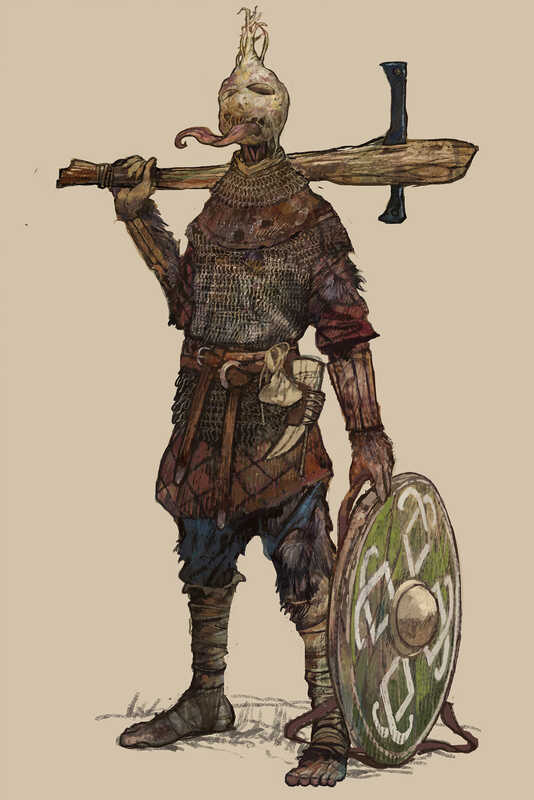
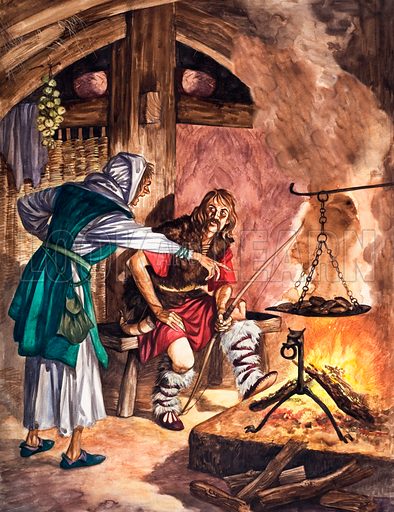
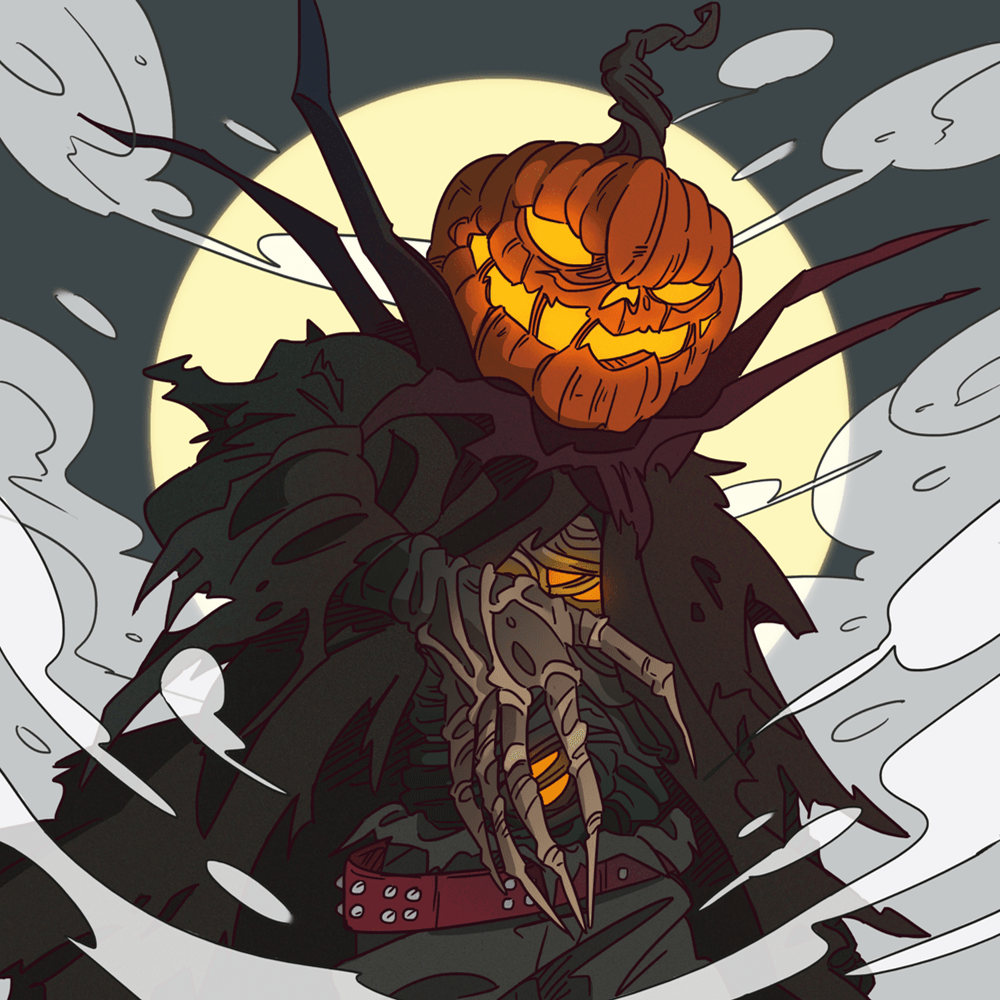
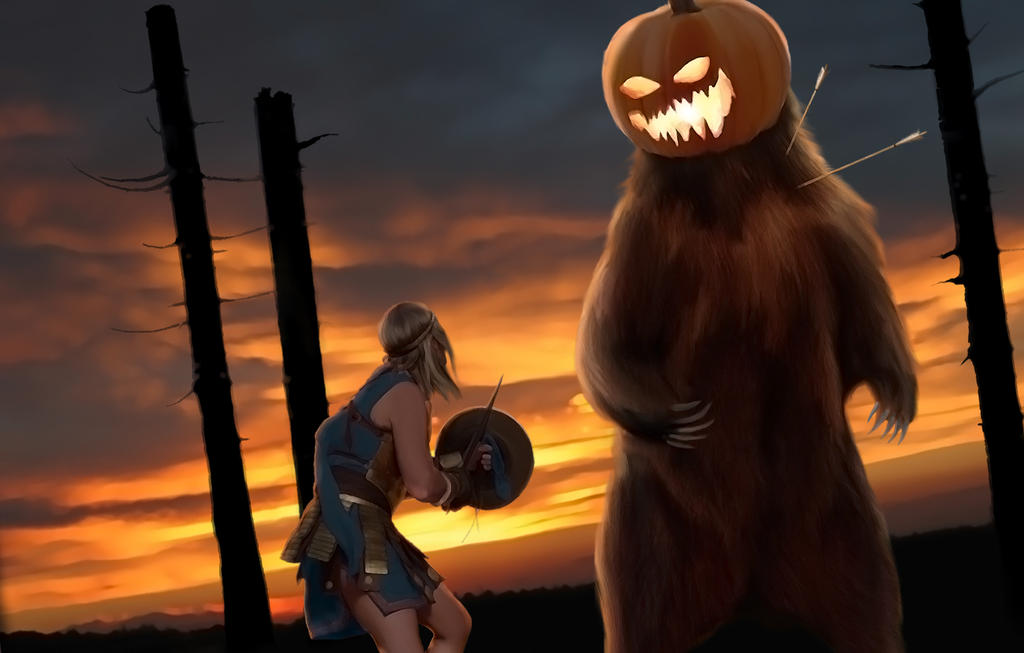
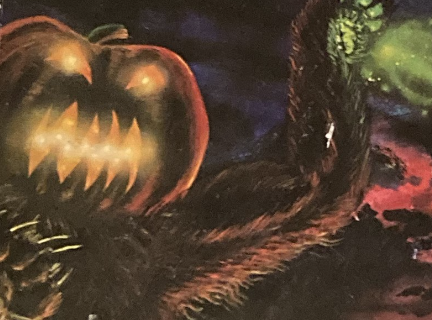

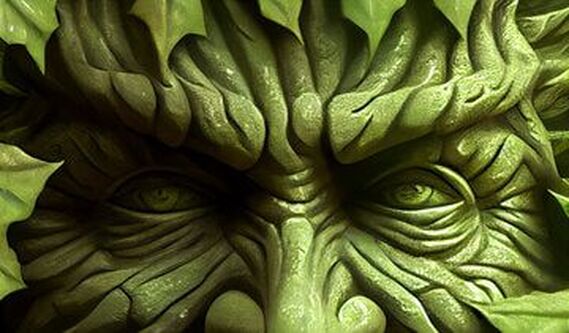

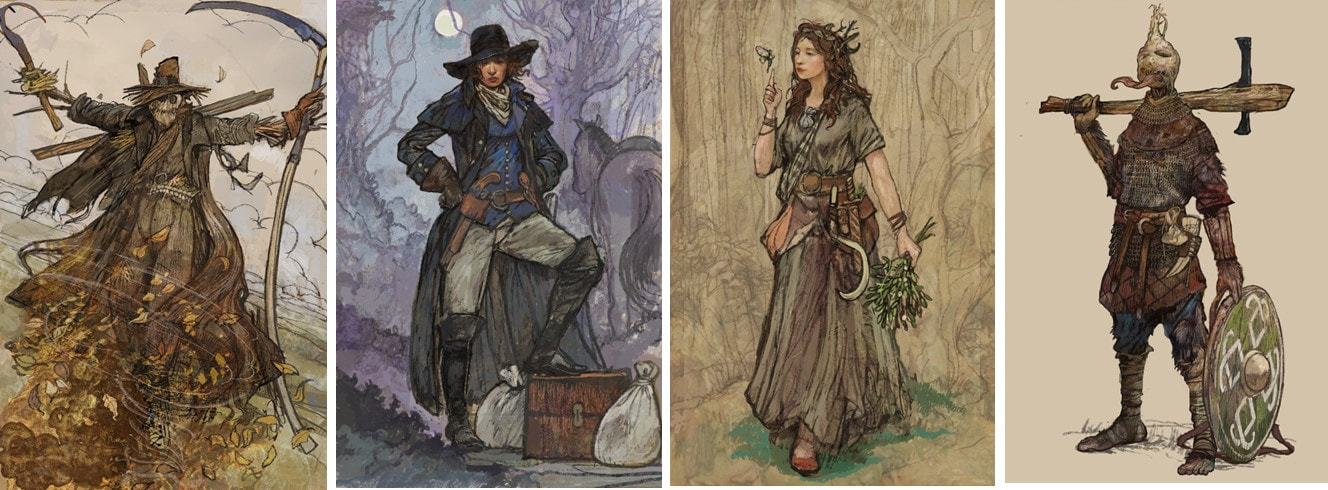

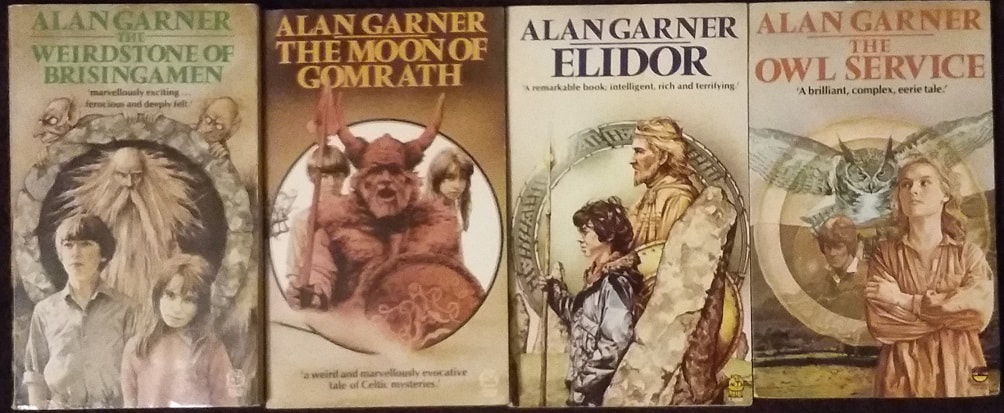

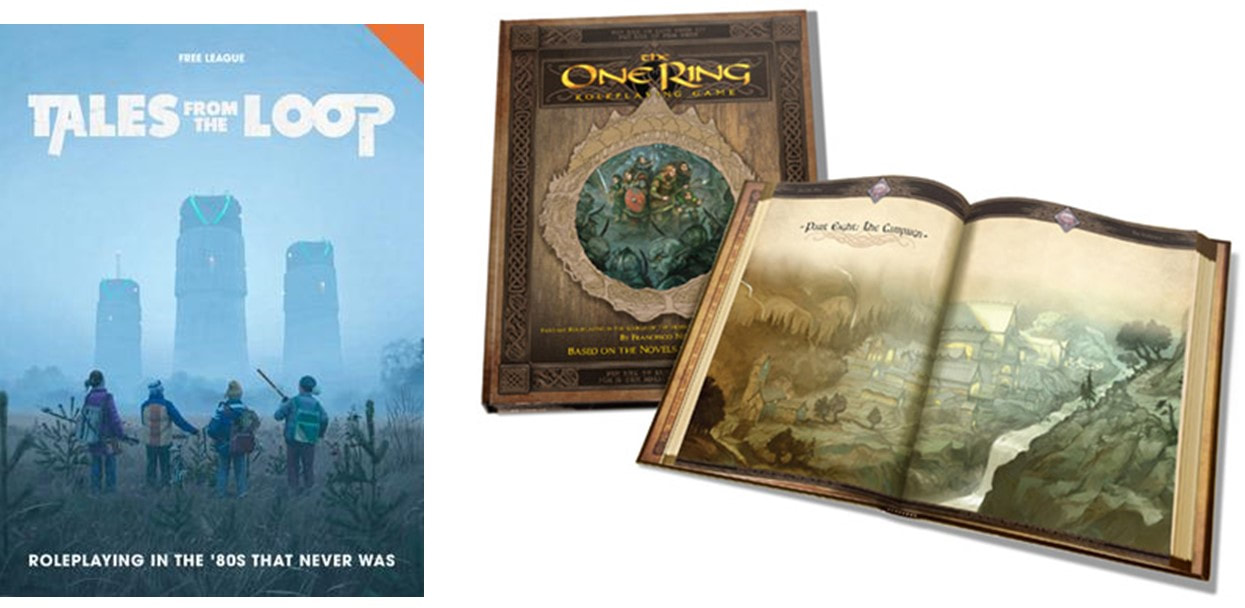

 RSS Feed
RSS Feed
